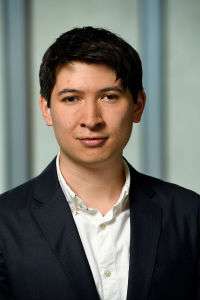
Q&A: Matthew Chin
January 3, 2019
The Charles B. Wang Community Health Center, where Bloomberg Fellow Matthew Chin works as a research and evaluation associate, provides culturally competent health services to many Asian-Americans in New York City.
The federally qualified health center offers primary care as well as links to social and mental health services. The majority of its patients are low-income Asian Americans with limited proficiency in English, a group that has not been studied extensively in evaluations of health interventions.
Matthew and others at the center are working to change that. He’s evaluated the impact of a program that uses a comic book to educate patients about hepatitis B, as well as other interventions of the center’s Teen Resource Center. Now, he’s looking into the health-risk behaviors of Asian-American adolescents.
We talked with Matthew, a full-time MPH student at Johns Hopkins Bloomberg School of Public Health, about how he got interested in adolescent health and the work he’s doing to better understand the issues faced by Asian adolescents in New York.
How did you become interested in public health?
When I first started college, I thought I wanted to be a clinician, but I was drawn more to social science classes than chemistry or biology. The idea of treating a larger systemic problem, instead of treating individual cases, appealed to me.
I really liked the idea of investigating the “why.” Looking at why someone was getting sick or why one group of people is more healthy than another group. Public health lets me explore those questions.
I ended up graduating with a degree in public health and then started working at the Charles B. Wang Community Health Center.
Your research focuses on risks to adolescent health. What drew you to that field?
When I first started at the health center, I was assigned to do a lot of work with our Teen Resource Center, which offers a variety of programs to local Asian American adolescents. I did evaluations of their programs and some broader research.
As I worked on these projects, I realized how little data and research there is on our specific adolescent population, Asian Americans. And, the research that does exist isn’t nuanced enough to speak to the different ethnic groups, such as Chinese, Filipino, Japanese.
Are you looking to fill that research gap?
Yes. We’ve started some of that work. We had Chinese American adolescents at our Teen Resource Center answer questions from the New York City Youth Risk Behavior Survey.
The survey is regularly conducted by the New York City departments of health and education and the national Centers for Disease Control and Prevention. The health department, though, doesn’t break out the data for individual ethnic groups, just for Asian teens.
So, we compared the data exclusively from Chinese American teens to the overall Asian American data and we found some key differences, particularly with regards to leisure computer use. It appears more Chinese American youth engage in leisure computer use for three or more hours per day on an average school day than Asian Americans as an overall group.
This study used a convenience sample. We surveyed many youth patients who came to our health center in a two-month period. But the study may not be reflective of our total adolescent patient population or Chinese American adolescents in New York City overall. The findings just give us insight into potential differences between ethnically Chinese and other Asian American adolescent populations in New York City.
Connect With Us
Receive all the latest news from the Initiative by signing up for the American Health Dispatch newsletter, subscribing to the American Health Podcast, and subscribing to our YouTube channel.
Contact Us